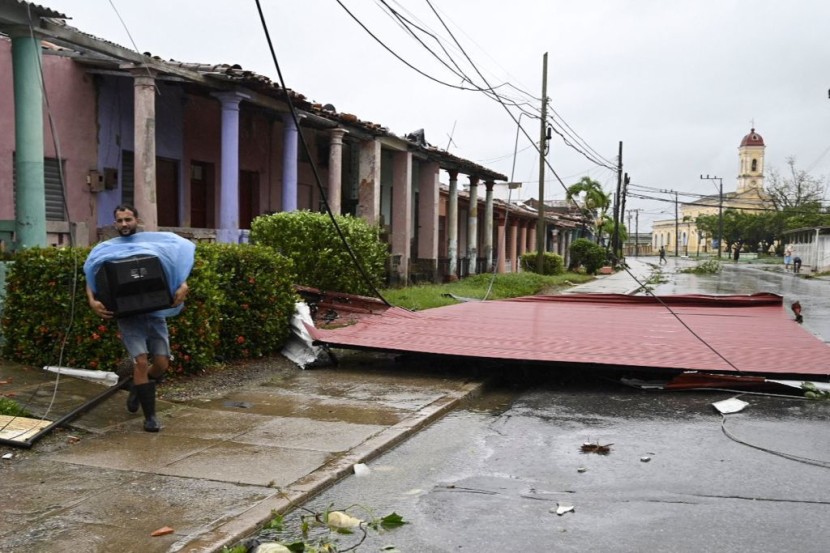
Hurricane Ian ripped across western Cuba on Tuesday and has no prospect of weakening before hitting Florida on Wednesday as a Category 4 hurricane.
Ian touched down in Cuba's Pinar del Rio province around 4:30 a.m. ET on Tuesday. NPR reported that Cuban authorities built up 55 shelters, evacuated 50,000 people, and deployed emergency workers.
The US National Hurricane Center reported "significant wind and storm surge impacts" Tuesday morning in western Cuba. Hurricane Ian had winds of up to 125 miles per hour as it passed over the city of Pinar del Rio. The storm surge near Cuba's coast was expected to reach up to 14 feet.
It was predicted that after passing over Cuba, Ian would intensify extensively over the warm Gulf of Mexico, attaining maximum winds of 140 mph before making another landfall.
Hurricane-force winds were predicted to hit Florida early Wednesday following late Tuesday's winds of tropical storm strength.
The hurricane center issued a warning from Bonita Beach north through Tampa Bay to the Anclote River, stating that there is a 100 percent possibility of destructive winds and water along Florida's west coast.
Florida Braces For First Direct Hurricane Hit in 101 Years
According to officials, Tampa and St. Petersburg may see their first direct hit by a major hurricane since 1921, and a storm surge of up to 3 meters (10 feet) may create coastal flooding.
Do you know where to find information about how Hurricane #Ian will impact your local area? See products from your local NWS office: @NWSKeyWest@NWSTampaBay @NWSMiami @NWSMelbourne @NWSTallahassee @NWSJacksonville pic.twitter.com/DOlzwFEnBM
— National Hurricane Center (@NHC_Atlantic) September 27, 2022
Florida Governor Ron DeSantis warned of a widespread disaster that prompted locals to store food, water, medication, and fuel.
During a Monday media conference, Gov. DeSantis said that the approaching storm is a "really big hurricane" and urged residents to stay calm and prepare themselves well.
Over the weekend, the governor proclaimed a state of emergency for the whole state of Florida and deployed 5,000 National Guard members to help with recovery operations, according to BBC. On Monday, the Florida National Guard mobilized 2,000 more soldiers from Tennessee, Georgia, and North Carolina.
The White House has also declared an emergency, which will help coordinate disaster relief between federal and state officials.
Federal officials are stockpiling food and water in Florida and Alabama.Officials are worried about Ian's storm surge since tropical storm conditions could start as early as Tuesday night.
Tampa Electric may cut down electricity in downtown's southern tip early Wednesday to prevent major devastation to subterranean infrastructure from seawater storm surge," which would minimize repair duration after the hurricane.
DeSantis stated on Monday that Tuesday's operations at Tampa Bay International Airport will be suspended at 5 p.m. The governor said that the Port of Tampa Bay similarly intended to halt operations at 8 a.m. Tuesday.
President Biden Approves Measure To Boost Coordination
President Joe Biden granted a disaster declaration for Hurricane Ian on Saturday, CNN reported. It "authorizes the Department of Homeland Security, Federal Emergency Management Agency (FEMA), to coordinate all disaster relief efforts to ease the hardship and suffering caused by the emergency on the local population," per a White House statement.
US Department of Health and Human Services Secretary Xavier Becerra declared a public health emergency for Florida to offer healthcare providers and suppliers more options to address emergency healthcare needs.
Becerra noted that his agency is working closely with "state, local, and tribal health authorities" of Florida on "responding to the health impacts of Hurricane Ian."
Related Article : President Joe Biden Plans To Cancel Student Loan Debt Worth $400 Billion; Majority of Americans Oppose Forgiveness If Taxes Will Rise








